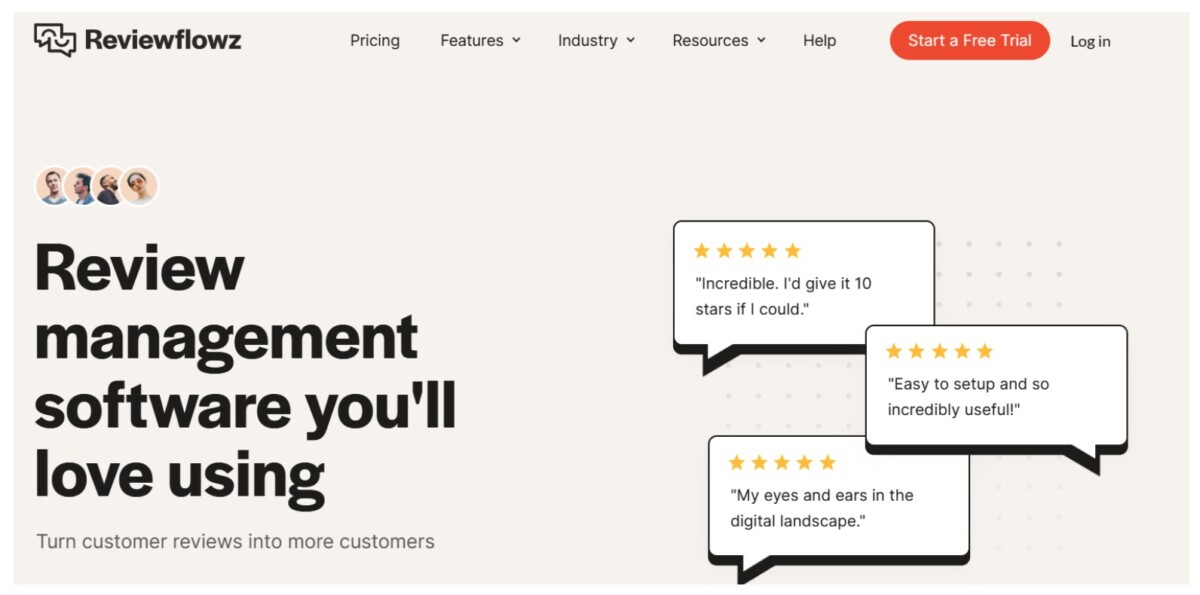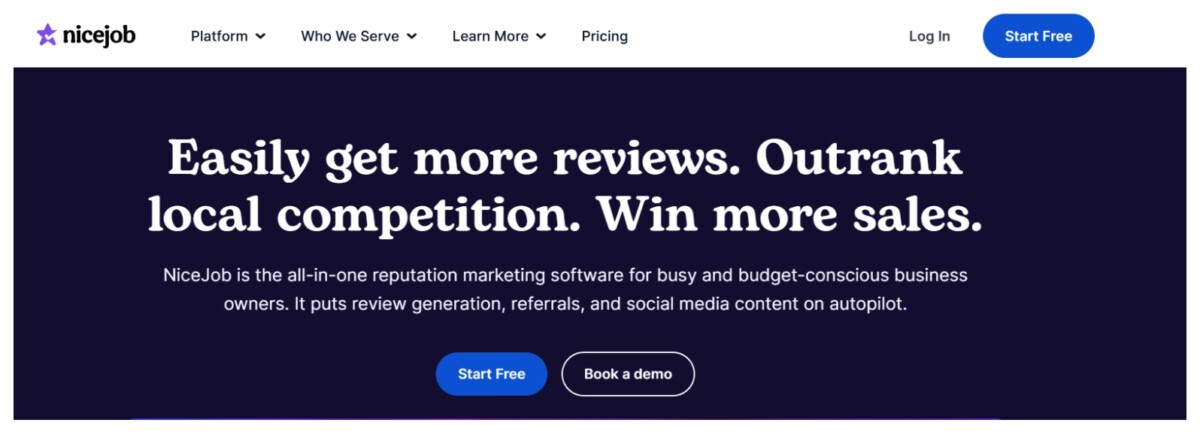What people say about your brand online can either fuel your growth or quietly erode it.
In 2026, online reputation management has become one of the most powerful factors influencing customer trust and buying decisions.
From Google reviews to social media mentions and third-party listing sites, today’s buyers form opinions long before they interact with your business directly. A single negative review, an outdated listing, or a delayed response can quickly snowball into lost business.
The good news? The online reputation management tools are evolving rapidly, offering real-time monitoring, automated workflows, and deeper insights than ever before.
In this blog, we’ll explore what online reputation management tools actually do, what to look for when choosing one, and compare the top seven tools of 2026.
Why are reputation management tools critical to modern business strategy?
Reputation management tools have become essential to modern business strategy because they offer the visibility, speed, and control needed to shape public perception rather than react to it.
Here’s why they matter:
- Faster response times to customer reviews and issues
- Proactive reputation building across channels
- Improved brand credibility by showcasing satisfied customers
- Greater impact on SEO and discoverability
- Stronger insights into customer sentiment and trends
- Streamlined workflows by consolidating reviews, social listening, and analytics in one place
In short, these tools allow businesses to monitor, manage, and improve their digital reputation at scale, making them a non-negotiable part of any growth-focused strategy in 2025 and beyond.
Checklist: How to choose the best online reputation management tool
With so many tools on the market, choosing the right online reputation management software can feel overwhelming. Use this checklist, paired with practical, tool-specific questions, to evaluate which platform fits your needs in 2025 and beyond:
Define your objectives
Are you looking to generate more positive reviews, respond faster to feedback, monitor brand mentions, manage listings, or all of the above?
User-friendly interface
Does the platform offer a clean, intuitive design for monitoring and responding to reviews across channels? Can users with no technical background navigate it confidently?
Key features to look for
Look for a tool that covers the essentials your business needs today and can scale with you.
-
Review management
Can you collect, manage, and respond to reviews from all platforms in one place? Can you automate review requests via email or SMS?
Troof is an AI-powered customer feedback platform that helps businesses understand what their customers are really saying – across reviews, surveys, and support tickets.
It pulls all your feedback into one place, analyzes it automatically, and surfaces the insights that actually matter. So you can spot issues faster, improve what’s working, and grow without guesswork.
-
Social media management
Can you create, schedule, and publish social media content directly from the platform? Does it track brand mentions and customer feedback across social channels in real time?
-
Listing management
Does the tool help you manage and update business information across major directories from one place? Can it detect and fix inconsistent or duplicate listings automatically?
-
Competitor monitoring
Does it track competitor reviews, ratings, and customer sentiment?
Can you benchmark your reputation performance against key competitors?
-
Sentiment analysis
Can the tool identify trends in customer sentiment (positive, neutral, negative) automatically? Does it identify recurring themes in customer feedback over time?
-
Reporting & Analytics
Are the insights actionable? Can you track performance over time and share reports with your team?
-
Integrations
Can you sync it with your CRM or other existing business systems for streamlined workflows?
Customer support
Is support available when you need it via chat, email, or phone? Are there onboarding resources or training?
Security
Does the platform comply with data protection standards like GDPR or HIPAA (if applicable)? Is your customer information safe?
Pricing
Is the pricing transparent? Are you paying only for the features you need? Will it still offer value as you scale?
Now that you know what to look for, let’s explore the top online reputation management platforms making waves in 2025.
Top 7 online reputation management platforms in 2025
From automation to analytics, here are seven ORM software that stand out for their features, flexibility, and results.
Birdeye

Birdeye offers a robust, all-in-one GenAI solution for enterprise-scale and multi-location reputation management, covering reviews, messaging, listings, and social media monitoring.
Pros:
- AI-powered, brand-compliant review responses in multiple languages, combining human-like tone with intelligent translation to ensure fast, consistent, and professional replies.
- Automated online listings management to maintain accuracy across all major directories and eliminate the hassle of manual edits.
- Real-time alerts for new reviews, enabling rapid responses that strengthen customer trust and retention.
- Advanced sentiment analysis and AI summaries of feedback to identify trends, uncover root causes of issues, and highlight areas for improvement without manual effort.
- Competitor benchmarking through Birdeye’s Competitors AI, offering actionable insights to improve positioning and close performance gaps.
- Comprehensive dashboards and customizable reports for monitoring performance metrics across individual locations and at the enterprise level.
- Seamless integration with 3,000+ platforms, including CRMs, helpdesk systems, and more for streamlined workflows.
Cons:
- Birdeye provides businesses with advanced AI tools that evolve with their needs. Although there’s a bit of a learning curve, most teams usually pick it up quickly and see clear benefits.
- Birdeye’s pricing model is tailored to give multi-location brands the best value. While it might not suit single-location businesses, it’s designed to support complex operations effectively.
Mention

Mention is best known for its real-time social media and web monitoring. It excels at tracking brand reputation across forums and news sites.
Pros:
- Wide-reaching media and web coverage
- Real-time alerts with customizable filters
- Sentiment analysis for social and online mentions
- Useful for both brand monitoring and competitive analysis
Cons:
- While great for tracking conversations, it doesn’t offer native tools for review collection or response workflows.
- Best suited for teams focused more on monitoring and analytics than on hands-on reputation management.
Brand24

Brand24 focuses on monitoring brand mentions and conversations across digital channels. It’s a strong fit for businesses focused on tracking public sentiment and trends.
Pros:
- Clean, intuitive interface
- Alerts for spikes in brand mentions or sentiment changes
- Tracks share of voice and influencer mentions
- Affordable pricing tiers
Cons:
- Focused on brand mentions rather than direct review generation or response management.
- May require complementary tools to handle listings or hands-on review engagement.
Reviewflowz

Reviewflowz is a focused solution for monitoring customer reviews across platforms. It’s especially popular with product-led and SaaS companies.
Pros:
- Simple setup and fast onboarding
- Centralizes reviews from multiple platforms
- Slack and email notifications for new reviews
- Browser extension for on-the-go access
Cons:
- Primarily built for monitoring, teams looking for in-depth analytics might need additional tools.
- Doesn’t support replying to reviews within the platform; designed mainly for visibility, not engagement.
NiceJob

NiceJob is a reputation marketing platform known for streamlining review collection, social proof sharing, and referral campaigns. It’s especially popular with small and service-based businesses.
Pros:
- Easy to set up and use
- Automated review requests via email/SMS
- Shares top reviews on websites and social media
- Integrates with 1,000+ apps (Zapier, HubSpot, etc)
Cons:
- While it covers core review features well, tools for social and listing management features are limited.
- Pricing may rise with higher usage.
Inmoment

InMoment offers enterprise-level reputation and customer experience (CX) tools. It goes beyond monitoring to offer deep feedback analysis and voice-of-customer programs.
Pros:
- Advanced sentiment and text analytics
- Custom survey and feedback collection
- Scalable for large, distributed teams
- Insights across multiple touchpoints
Cons:
- Due to its CX depth, the platform may involve a steeper learning curve.
- Smaller businesses may find the feature set more expansive than their immediate needs.
Grade.us

Grade.us focuses on helping businesses generate, manage, and market customer reviews. It’s ideal for agencies or local service providers looking to scale review collection and manage reputation.
Pros:
- Intuitive dashboards and reports
- Review generation via email and SMS
- Review funnel landing pages
- Integrates with Google, Facebook, Yelp, and more
Cons:
- Reporting and export filters work well for standard use, but offer limited flexibility for customization.
- Primarily focused on reviews, social listening, or customer sentiment analysis may require pairing with another solution.
Final thoughts:
Managing your online reputation isn’t just about damage control, it’s about building trust before people even visit your website. With the right tool, you can track feedback, respond efficiently, establish a presence on listing directories, and proactively address issues before they escalate.
Whether you’re looking for deep insights, automation, or simplicity, the list mentioned above covers a range of solutions that will suit your business needs.
FAQs on online reputation management tools
Q: What is a reputation management tool?
A: An online reputation management (ORM) tool helps businesses track, manage, and improve how they’re perceived across digital platforms. This includes monitoring reviews, responding to feedback, analyzing customer sentiment, and managing mentions on social and news media.
Q: Which platform is best for reputation management?
A: Birdeye stands out for its all-in-one features, including review management, messaging, and analytics.
Q: Can I respond to reviews directly from these platforms?
A: Most tools like Birdeye, Soci, and Grade.us allow direct in-app responses.




